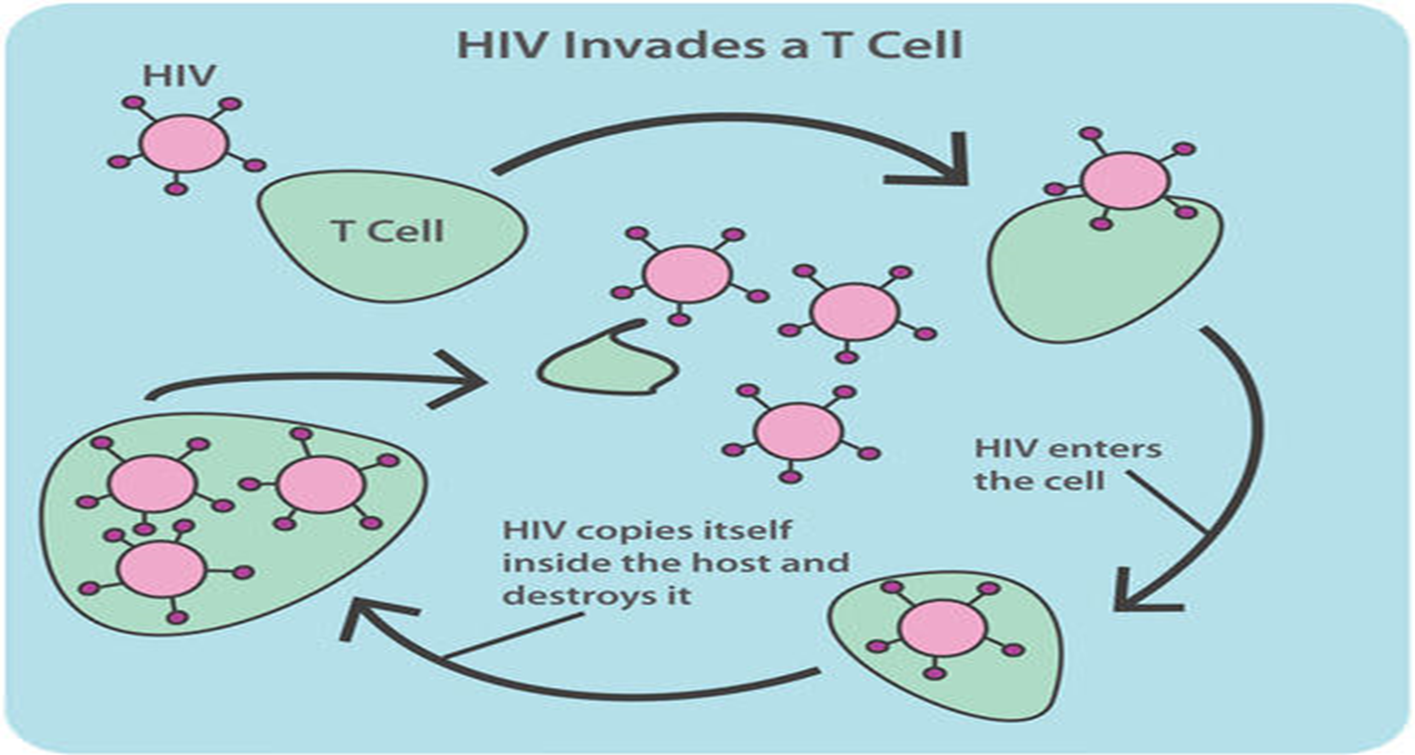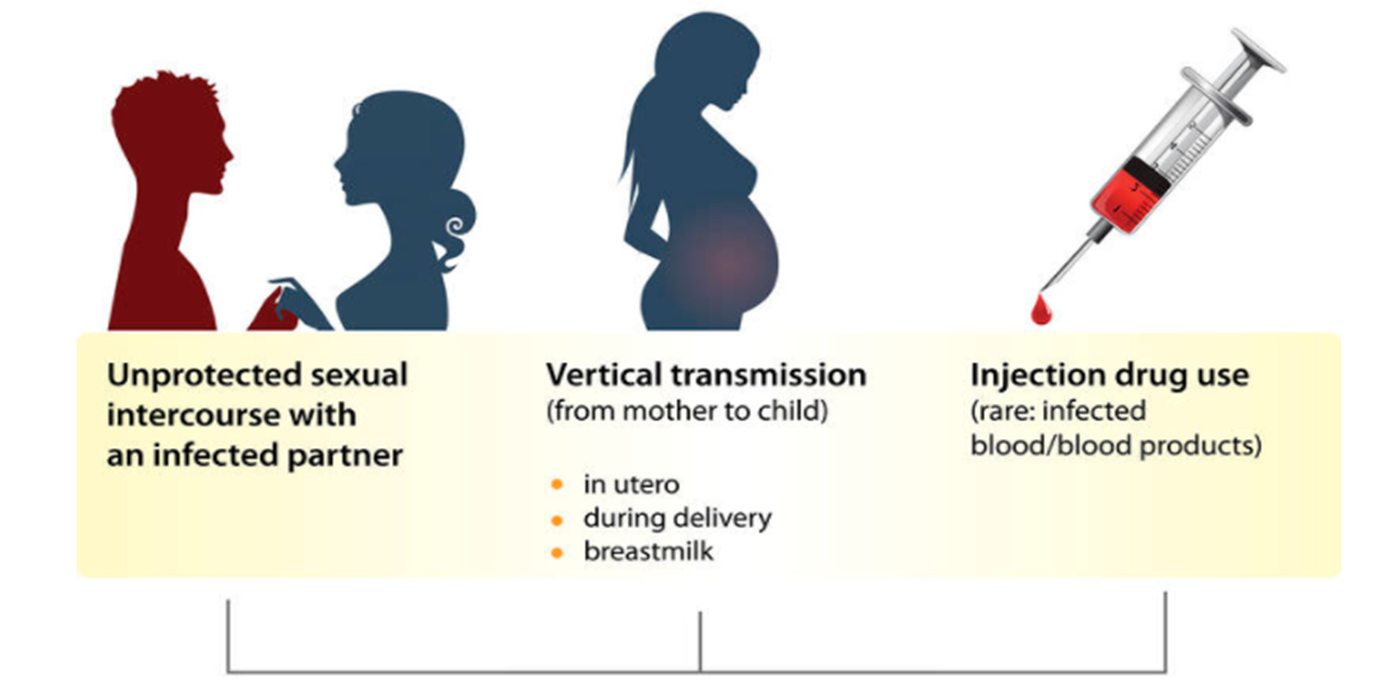HIV Infection

AIDS stands for “acquired immunodeficiency syndrome” which is an advanced stage of the human immunodeficiency virus (HIV) infection. AIDS is a chronic, life-threatening condition that results from HIV (Abraham, 2019). HIV interferes with the immune system by hindering the body’s ability to fight diseases and infections by destroying helper T cells which are responsible for keeping the human body immune from illnesses (K-12 Foundation 1). Medical practitioners say that AIDS is identified in a person when the CD4 count is below 200 cells per cubic millimeter (Abraham, 2019). After penetrating helper T cells, the virus copies itself in the host and destroys or infects the cell and other helper T cells throughout the body.
Causes of HIV/AIDs

Figure 2 above illustrates the various ways that increase the chances of a person contracting the HIV virus. They comprise getting in contact with vaginal fluids, semen, and the blood of an infected person (Abraham, 2019). Moreover, the virus can be contracted by engaging in unprotected sexual activity with persons infected with the virus (Abraham 37). Another way a person can contract the virus is by sharing piercing instruments with infected persons. The virus also can pass from a mother to child while breastfeeding, during birth, or during pregnancy (Abraham, 2019). Without receiving suitable medication, it might take years before HIV makes the immune system weak to the point of developing AIDS (Abraham 25). These are some of the ways that the HIV virus can pass from an infected to a healthy person.
Effects of HIV/AIDs

HIV/AIDS will have various effects on the body of a patient. For instance, HIV will destroy the CD4 cell count in the body of a patient which is vital for immunity from diseases and infections (Abraham, 2019). During the first several weeks, the body’s immune system tries to fight the virus. As evident in Figure 3 above, the human body’s response leads to a temporary reduction in the number of virus copies or the multiplication process. However, rapid reproduction makes it difficult for the immune system to completely destroy the pathological virus. Continued multiplication of the virus over the next several years results in further decline in helper T cells, consequently weakening the immune system further (K-12 Foundation 2. This compromise exposes the body to frequent infections.
Furthermore, a lack of appropriate medication will create a high risk of developing opportunistic diseases such as pneumonia, influenza, colds, breathing problems, fever, cough, pulmonary arterial hypertension (PAH), and cancer (Brady et al., 2019). Other consequences include loss of appetite, weight, and death.
References
Abraham, Thomas. “HIV and AIDS: The Causes and Effects.” HEKAMTHO (2019). Web.
Brady, Michael T., et al. “Guidelines for the Prevention and Treatment of Opportunistic Infections in HIV-Exposed and HIV-Infected Children.” Vaccine, 2019. Web.
Wilkin, Doughlas and Jean Brainard. “HIV and AIDS – Advanced.” K-12 Foundation, 2020. Web.
